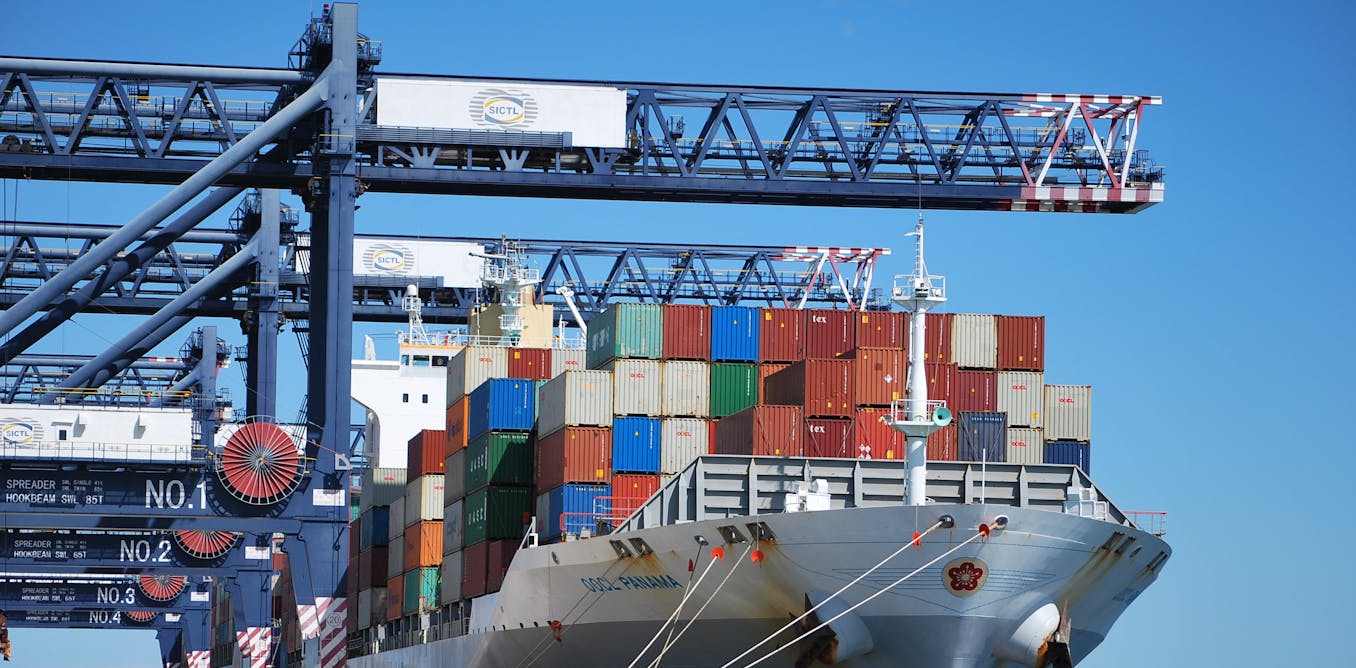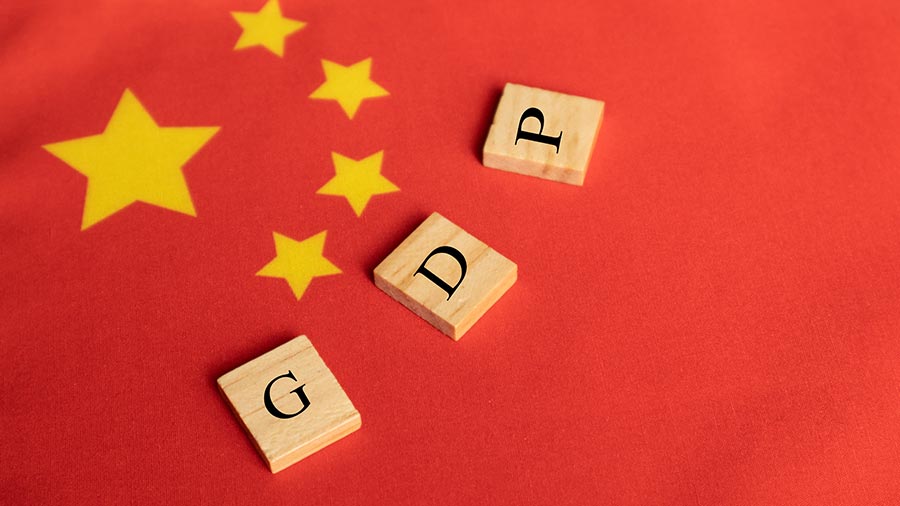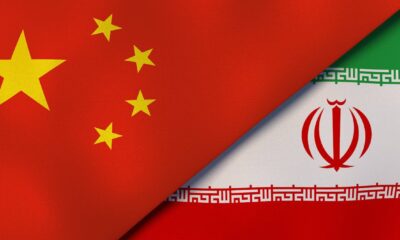China
Is Australia’s trade war with China now over? The answer might be out of our hands

Australia’s rock lobster industry can export to China again, ending a significant trade barrier. However, future relations depend on geopolitical dynamics between China and the U.S., warranting cautious optimism.
Finally, Australia’s rock lobster industry will be able to export to China again, following a deal struck on the sidelines of the ASEAN summit in Laos last week.
It will take some weeks to finalise the paperwork, but Chinese diners can expect to eat our high-quality crustaceans as we devour our Christmas roast turkeys.
The breakthrough brings a particularly nasty chapter in Australia-China trade relations to a close. Tariffs on rock lobsters were the only remaining major restriction of a raft of trade barriers imposed by China in 2020.
It might be tempting to celebrate, but we should tread carefully. Our situation remains hostage to Beijing’s relationship with Washington. Whether Australia’s trade woes with China are actually over may ultimately be out of our hands.
Read more:
China removes block on Australian lobster, in last big bilateral trade breakthrough
Australia’s reversal of fortunes
The past couple of years have been a whirlwind.
The Albanese government has seen China systematically undo the export restrictions it had imposed on Australia in 2020 – including on barley, wine, beef, and now lobster – without giving away much of substance in return.
Yes, Australia suspended two cases it had brought against China at the World Trade Organization, concerning barley and wine duties China had imposed. But those cases can be resumed if the Chinese government backslides.
China will resume imports of Australian lobster by the end of this year.
Abdul Razak Latif/Shutterstock
And true, the Albanese government did not oppose China’s bid to join the Comprehensive and Progressive Agreement for Trans-Pacific Partnership – an important regional free trade agreement of which Australia is a founding member. But neither did it endorse China’s bid.
It seems we’ve come a long way since 2020, when China tabled its infamous “14 grievances” against Australia. This deliberately leaked document publicly criticised Australia on a whole range of fronts, including foreign investment decisions, alleged interference in China’s affairs, research funding and media coverage.
A more sobering picture elsewhere
This reopening of trade might make it seem like things are looking up for Australia. In some cases, our business community has bounced back with gusto, notably wine exports to China.
Zooming out, however, paints a more sobering picture of global trade relations. In the near term, the decisions of our key allies – namely the United States – may come to matter more than our own.
The Biden administration has long hoped to place a “floor” under America’s geopolitical competition with China. Neither side wants things to get ugly.
But in Washington, strong bipartisan consensus remains that China must be confronted. The US has continued to take coercive actions against Chinese exports and investment.
For example, the US recently imposed a 100% import duty on electric vehicles produced by Chinese-owned companies. Similarly, it imposed a 25% import duty on imports of Chinese container cranes. Strategic distrust will escalate no matter who wins the White House on November 5.
This animosity is mirrored in Beijing. China’s security state is expanding ever more into business, while its private sector retreats. China’s own coercive activities are also escalating in regional disputes over the South and East China seas, as well as in its trade retaliations against Western markets.
Distrust continues to simmer between China and the US.
Doug Mills/The New York Times via AP, Pool
Widening tensions
These tensions are also playing out in Europe and the Middle East. International relations scholars worry that the West must now confront an authoritarian axis comprising Russia, Iran, North Korea and China.
China’s “no limits” partnership with Russia has spooked most European elites. Western sanctions on Russia, meant to erode the Kremlin’s war machine, are likely being circumvented by China’s unmatched industrial capacities.
Iran’s military support for Russia supplements the Kremlin’s war-fighting capacities at Ukraine’s expense.
Unsurprisingly, economic security concerns are rapidly eclipsing free trade considerations for the US.
Advanced manufacturing capabilities – such as semiconductor production – are increasingly important strategic assets.
genkur/Shutterstock
When US National Security Advisor Jake Sullivan introduced the 2022 National Security Strategy, he adopted a selectively restrictive approach he called “small yard, high fence”.
He was talking about export controls and inward restrictions on investment, applied to high-technology products.
Since then, the “yard” has grown wider, and the “fence” has expanded. More sectors and products are being thrown into the mix, from energy security, through critical minerals, to food production.
The challenge with digital technologies, able to be used for both military and civilian purposes, is that the yard can be very large indeed.
Middle power problems
The US has the economic and military weight to confront China. As the European Union is learning, having the economic weight is necessary. But being politically united is essential, and they remain far from that.
Australia is a middle power, without the necessary economic weight or military heft to confront China. That means we must support the rules-based multilateral trading system – preserving the authority of institutions like the World Trade Organisation (WTO) – to constrain the actions of the great powers and preserve as much of our open trade posture as possible.
Australian Prime Minister Anthony Albanese attended the ASEAN Summit in Laos last week.
Rungroj Yongrit/EPA
Washington, however, increasingly expects its allies to fall into line. How else can one explain Canada’s decision to follow the US and impose 100% import duties on electric vehicles produced by Chinese owned companies?
Like Australia, Canada is also a middle power. It is also a strong supporter of the rules-based multilateral trading system. But Canada’s action violates WTO rules.
The fact that Washington’s actions also violate these rules is taken for granted these days.
Australia must pay attention
Global trade cooperation is deteriorating, and the world is fracturing into two “values-based” trading blocs. While there could be positive upswings in our bilateral trade relations with China, the medium term trend is down.
As Napoleon Bonaparte is reputed to have said:
China is a sleeping giant; let him sleep, for if he wakes he will shake the world.
China has changed, and the world with it.
Australian business needs to pay attention. Our East Asian partners, notably Japan and South Korea, have long spoken of the need for a “China plus one” (or more) business strategy – making sure trade and investment is diversified into other countries, as well.
Such diversification will be increasingly important in the years to come.
This article is republished from The Conversation under a Creative Commons license. Read the original article.
Business
China Reports Agreement on Ceasefire between Myanmar’s Factions

Myanmar’s conflicting parties have reached a ceasefire agreement, facilitated by China, aiming to reduce violence and promote peace in the region.
Myanmar Ceasefire Agreement
In a significant development, conflicting parties in Myanmar have reached an agreement for a ceasefire, with China facilitating discussions. This breakthrough is crucial for restoring peace in a nation that has been marred by violence and political strife in recent years. The ceasefire aims to pave the way for reconciliation efforts and improve the humanitarian situation in affected areas.
Role of China
China’s involvement as a mediator highlights its growing influence in resolving regional conflicts. The Chinese government has been working closely with both sides to promote dialogue and trust, crucial elements for a long-term peace solution. Increased stability in Myanmar can benefit regional security and economic development, making China’s mediation significant.
Looking Forward
The hope is that this ceasefire will lead to further negotiations addressing underlying issues in Myanmar. While challenges remain, both parties have expressed willingness to work towards a peaceful resolution. The international community will be watching closely to see if this ceasefire can be sustained and lead to enduring peace for the people of Myanmar.
China
2024 China Economic Review: GDP, Trade, and Foreign Direct Investment Analysis

In 2024, China’s economy grew 5%, supported by stimulus measures, strong exports, and high-tech investments, despite weak domestic demand and demographic challenges. Key sectors like manufacturing and digital economy thrived, necessitating structural reforms for sustained growth into 2025.
China’s economy grew 5% in 2024, driven by stimulus measures, strong exports, and high-tech investment, despite challenges like weak domestic demand and demographic pressures. Structural reforms and targeted policies are essential for sustaining growth into 2025.
China’s economic performance in 2024 saw a return to steady growth, achieving a 5 percent GDP expansion in line with the government’s target, as per the official data released by the National Bureau of Statistics (NBS) on January 17, 2025. This outcome was largely bolstered by stimulus measures that helped drive a stronger-than-expected fourth-quarter recovery. While the country’s economy faced challenges such as declining population numbers and sluggish consumer demand, there were signs of optimism across key sectors, including industrial output and digital economy growth.
Additionally, China is beginning to pivot away from its dependence on the property sector, with the digital economy playing an increasingly significant role in economic expansion.
This article explores the major economic highlights from 2024 and examines the key trends, challenges, and opportunities that will shape China’s economy in the year ahead.
In 2024, China’s GDP reached RMB 134.91 trillion (US$18.80 trillion), maintaining its position as the second-largest economy in the world, behind only the United States, whose projected GDP for 2024 stands at approximately US$29 trillion. This reflects a year-on-year growth of 5.0 percent, in line with the government’s official target of “around 5 percent“ set during the 2024 Two Sessions. While slower than the 5.2 percent growth achieved in 2023, it highlights a stable recovery largely driven by strong export performance and targeted stimulus measures throughout the year.
The economy saw accelerated growth in the final quarter of 2024, with GDP expanding by 5.4 percent, surpassing expectations and making a substantial contribution to the overall 5.0 percent increase. Indeed, quarterly growth performance in 2024 showed steady improvement: the first quarter recorded a 5.3 percent increase, followed by 4.7 percent in Q2, and 4.6 percent in Q3.
Sectoral performance highlights revealed the manufacturing and service sectors as key drivers.
| This article was first published by China Briefing , which is produced by Dezan Shira & Associates. The firm assists foreign investors throughout Asia from offices across the world, including in in China, Hong Kong, Vietnam, Singapore, and India . Readers may write to info@dezshira.com for more support. |
Read the rest of the original article.
China
How China’s appetite for salmon could reshape global seafood markets – new research

China’s salmon demand surged 46% in 2023, prompting global exporters to respond. Challenges in domestic salmon production highlight opportunities for rainbow trout, reshaping the seafood market towards sustainability and consumer preferences.
China’s demand for farmed salmon is growing at an unprecedented pace. In 2023, its imports grew by 46% year on year – with imports of fresh and chilled Atlantic salmon up 63%.
This remarkable growth is reshaping the global seafood trade. Exporters from Scotland, Norway, Chile, Australia, Faroe Islands, Canada and Iceland are racing to supply the needs of this vast and rapidly evolving market.
At the same time, China’s efforts to produce its own Atlantic salmon have faced significant challenges, highlighting the need for substitutes like rainbow trout to meet the country’s growing appetite for seafood delicacies.
An important shift occurred in 2018, when the Chinese government permitted rainbow trout to be labelled and sold as salmon. This decision blurred the distinction between imported Atlantic salmon and locally farmed rainbow trout, creating a more accessible option for cost-sensitive consumers.
Trout is comparable to salmon in appearance and size, with firm and oily meat that has a similar orange-pink colour. Nutritionally too, the species are alike, as are the ways in which they can be cooked and prepared.
In our new research which included taste tests, we found that many Chinese consumers could not distinguish between domestic rainbow trout and imported Atlantic salmon in blind testing. But when informed about the origin, testers’ preferences shifted strongly in favour of imported Atlantic salmon, highlighting the power of provenance in consumer tastes.
Although people’s willingness to pay did not vary initially in our blind tests, it became a decisive factor once the origin of the fish was revealed.
But we found that origin alone was not enough. For our testers to be prepared to pay higher prices, they also had to like the look, smell and taste of the product more, or be persuaded by its ecolabel (indicating environmental standards).
Environmental costs
Transporting Atlantic salmon from Scottish lochs, Norwegian fjords or Chilean waters to Chinese markets involves complex logistics and significant environmental costs. The carbon footprint of this trade, combined with the resource-intensive nature of salmon aquaculture, raises critical concerns about sustainability.
These challenges are particularly pronounced in China, where consumers have a strong preference for freshness. This drives demand for quick delivery of imported salmon despite its environmental impact, and consumers are increasingly turning to online platforms to buy their seafood.
E-commerce has reshaped seafood retail in China, offering quick delivery and products that cater to consumer demand for quality and freshness. Salmon stands out in this market due to its perceived high value, premium quality and price point. Unlike other expensive seafood that often needs to be sold live to maintain its value, salmon retains its appeal when chilled or frozen.
This makes salmon particularly suited to modern retail models, where sophisticated cold-chain logistics ensure its freshness without the complexities of live transport. However, these innovations come at a cost.
The energy-intensive storage and rapid transportation required for imported salmon contribute significantly to environmental harm. As China’s seafood market continues to grow, addressing the sustainability challenges associated with this trade will be critical to balancing consumer demand with environmental responsibility. Current international certification schemes aiming to improve the sector’s sustainability have had limited impact in China so far.
A worker processing imported fresh salmon in a Beijing wholesale seafood market.
David Little, Author provided
China has made significant efforts to establish a domestic Atlantic salmon industry, but these attempts have largely been unsuccessful due to technical challenges and environmental constraints. This has left a gap that domestically farmed rainbow trout is poised to fill.
A trout farming raceway in Chengdu, China, supplied with fresh river water.
Zixuan Ma, Author provided
In 2022, China produced 37,000 tonnes of rainbow trout. This is a relatively small amount compared with international production levels, but still notable considering that rainbow trout is a new farmed species in China, unlike traditional species like carp.
However, rainbow trout farming in China is geographically constrained, as the species thrives in cooler freshwater temperatures found in higher-lying lakes and reservoirs, as well as in “raceways” (channels supplied continuously with fresh water diverted from rivers).
Advances in aquaculture systems offer a potential pathway to expand China’s production. Trout farming is a more sustainable, locally sourced alternative to Atlantic salmon that reduces the carbon footprint associated with imports and ensures fresher options for Chinese consumers. Developing a robust domestic trout industry could enhance food security, reduce dependence on imports, and create economic opportunities in rural areas.
China’s evolving seafood market offers valuable lessons for the global industry. Emphasising quality, freshness and sustainability will resonate with the increasingly sophisticated Chinese consumer.
At the same time, investment in eco-friendly aquaculture practices, both domestically and internationally, will be essential to balance the growing demand for premium seafood with environmental responsibility. These could include reducing feed waste and recirculating aquaculture systems (which filter and reuse water) to minimise water use. Recycling waste nutrients by using them elsewhere in food production could also be key.
As rainbow trout gains prominence in China’s seafood landscape, the relationship between consumer preferences, environmental concerns and economic opportunities could in turn shape the future of the global salmon trade.
If domestic fish captures a larger share of the Chinese market, salmon producers in Europe, Canada and other exporting regions may face significant challenges. This could ultimately force them to rethink their strategies in order to adapt to shifting market dynamics.
Although the goal of creating a domestic Atlantic salmon industry has proved difficult for China, trout farming presents a practical and sustainable solution for its luxury seafood sector.
This article is republished from The Conversation under a Creative Commons license. Read the original article.











